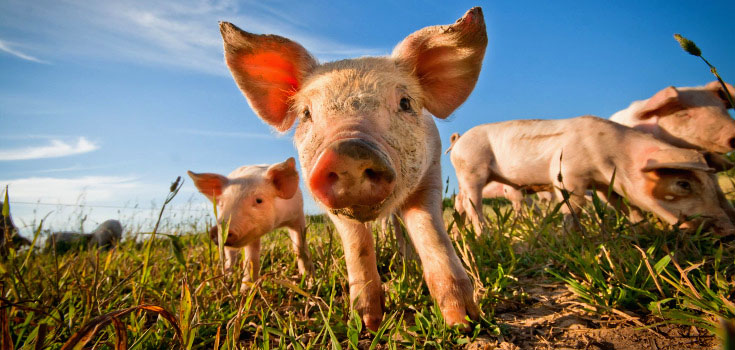GMO Bacon? ‘Genetically Modified’ Pigs on the Horizon
GMO Bacon?
Taking a step away from selective breeding
Are you ready for modern-made ‘GMO’ bacon? With the near-future possibility of gene-modified pigs coming to your local grocery store, this may be yet another biotech reality.
Molecular biologist Jin-Soo Kim at Seoul National University showed off pictures of hogs in the publication Nature just weeks ago. These genetically modified pigs were made to have bizarrely large backsides, considered the most edible part of the pig.
In the article, Kim’s team, from Korea and China, looked at a mutation in an extremely muscular variety of cattle called the Belgian Blue wherein a gene that ordinarily inhibits muscle growth gets switched off. Using a gene-editing technique called TALEN, the researchers induced a similar mutation in their pigs to make them, well, porkier.
It stands to note that gene-editing is already bypassing many regulatory checkpoints because it isn’t considered genetic engineering. Though, clearly it smacks of it in every conceivable way.
“Key to creating the double-muscled pigs is a mutation in the myostatin gene (MSTN). MSTN inhibits the growth of muscle cells, keeping muscle size in check. But in some cattle, dogs and humans, MSTN is disrupted and the muscle cells proliferate, creating an abnormal bulk of muscle fibres.
To introduce this mutation in pigs, Kim used a gene-editing technology called a TALEN, which consists of a DNA-cutting enzyme attached to a DNA-binding protein. The protein guides the cutting enzyme to a specific gene inside cells, in this case in MSTN, which it then cuts. The cell’s natural repair system stitches the DNA back together, but some base pairs are often deleted or added in the process, rendering the gene dysfunctional.
The team edited pig fetal cells. After selecting one edited cell in which TALEN had knocked out both copies of the MSTN gene, Kim’s collaborator Xi-jun Yin, an animal-cloning researcher at Yanbian University in Yanji, China, transferred it to an egg cell, and created 32 cloned piglets.”
The ‘gene-editing’ tool was, in fact, created because biotechnologists were getting wary of public disgust with regular GM technology. By using genome editing, companies are either outside the regulatory reach of government institutions like the FDA, or the laws simply haven’t caught up to the technologyfrom the time that they were originally written to regulate – in whatever grossly negligent way they have – our food supply.
So far, we’ve only had to push against GM products like corn, soy, sugar beets, papaya, etc., and as far as edible GMs are concerned, some GMO salmonwhich AquaBounty tried to push off on us. Fortunately, grocery stores refused after mass upheaval from customers ensued at the slightest mention of genetically modified fish. But now, we may have to worry about every last edible food being tinkered with by biotech – even your morning bacon.
If you think GM foods only affect us ‘greenies,’ think again. The carnivorous should be wary.
| About Christina Sarich: | |
| Christina Sarich is a humanitarian and freelance writer helping you to Wake up Your Sleepy Little Head, and See the Big Picture. Her blog is Yoga for the New World. Her latest book is Pharma Sutra: Healing the Body And Mind Through the Art of Yoga. | |
Other Popular Stories:

Post a Comment